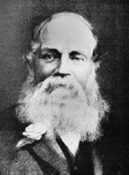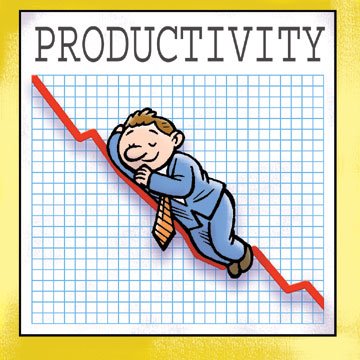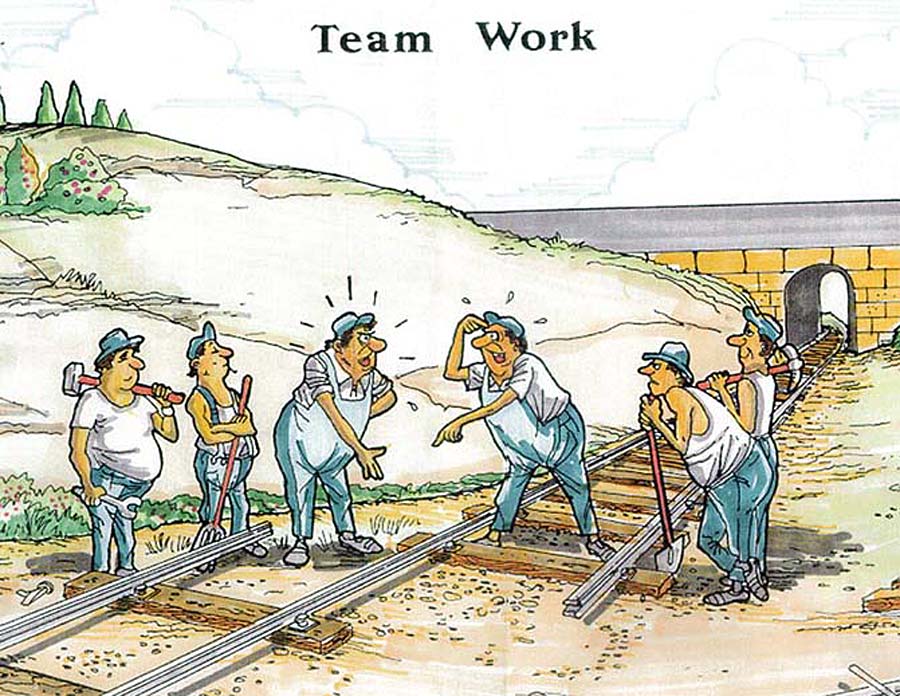| Input | Output | |
| ABCDE | Crompton | 1234 |
| PQRST | Greaves | 7890 |
| LEFTG |
Principles of Management
Wednesday 5 October 2016
Saturday 1 September 2012
Tuesday 21 August 2012
Theory X and Theory Y
Theory X and Theory Y
Origin:
Understanding
of Theories:
Management
style is strongly influenced by ones beliefs and assumptions about what
motivates members of your team: If you believe that team members dislike work,
you will tend towards an authoritarian
style of management – Theory X;
On the other hand, if you assume that employees take pride in doing a good job,
you will tend to adopt a more
participative style – Theory Y.
Theory
X or Authoritarian Style of management:
This style of
management assumes that workers:
·
Dislike working.
·
Avoid responsibility and need to be directed.
·
Have to be controlled, forced, and threatened to
deliver what's needed.
·
Need to be supervised at every step, with
controls put in place.
·
Need to be enticed to produce results; otherwise
they have no ambition or incentive to work.
In this theory, a hierarchical structure is needed with narrow
span of control at each and every level.
Theory
Y or Participative Style of management:
This style of
management assumes that workers:
·
Take responsibility and are motivated to fulfill
the goals they are given.
·
Seek and accept responsibility and do not need
much direction.
·
Consider work as a natural part of life and solve
work problems imaginatively.
Comparing Theory X and Theory Y:
· Motivation
Theory X assumes
that people dislike work; they want to avoid it and do not want to take
responsibility. Theory Y assumes that people are self-motivated, and thrive on
responsibility.
· Management Style and Control
In a Theory X organization, management is authoritarian, and centralized control is retained, whilst in Theory Y, the management style is participative: Management involves employees in decision making, but retains power to implement decisions.
In a Theory X organization, management is authoritarian, and centralized control is retained, whilst in Theory Y, the management style is participative: Management involves employees in decision making, but retains power to implement decisions.
· Work Organization
Theory X employees tend to have specialized and often repetitive work. In Theory Y, the work tends to be organized around wider areas of skill or knowledge; Employees are also encouraged to develop expertise and make suggestions and improvements.
Theory X employees tend to have specialized and often repetitive work. In Theory Y, the work tends to be organized around wider areas of skill or knowledge; Employees are also encouraged to develop expertise and make suggestions and improvements.
· Rewards and Appraisals
Theory X organizations work on a ‘carrot and stick’ basis, and performance appraisal is part of the overall mechanisms of control and remuneration. In Theory Y organizations, appraisal is also regular and important, but is usually a separate mechanism from organizational controls. Theory Y organizations also give employees frequent opportunities for promotion.
Theory X organizations work on a ‘carrot and stick’ basis, and performance appraisal is part of the overall mechanisms of control and remuneration. In Theory Y organizations, appraisal is also regular and important, but is usually a separate mechanism from organizational controls. Theory Y organizations also give employees frequent opportunities for promotion.
· Application
Although Theory X management style is widely accepted as inferior to others, it has its place in large scale production operation and unskilled production-line work. Many of the principles of Theory Y are widely adopted by types of organization that value and encourage participation. Theory Y-style management is suited to knowledge work and professional services. Professional service organizations naturally evolve Theory Y-type practices by the nature of their work; Even highly structure knowledge work, such as call center operations, can benefits from Theory Y principles to encourage knowledge sharing and continuous improvement.
Although Theory X management style is widely accepted as inferior to others, it has its place in large scale production operation and unskilled production-line work. Many of the principles of Theory Y are widely adopted by types of organization that value and encourage participation. Theory Y-style management is suited to knowledge work and professional services. Professional service organizations naturally evolve Theory Y-type practices by the nature of their work; Even highly structure knowledge work, such as call center operations, can benefits from Theory Y principles to encourage knowledge sharing and continuous improvement.

Demonstration of Theory X and Theory Y:
Conclusion:
Though these theories are very basic in nature,
they provide a platform for future generations of management theorists and
practitioners to understand the changing dynamics of human behavior. Taken too
literally, Theories X and Y seem to represent unrealistic extremes. Most
employees (including managers) fall somewhere in between these poles. Recent
studies have questioned the rigidity of the model, yet McGregor's X-Y Theories
remain guiding principles to the management to evolve processes which help in
organizational development. A mix of practices which ensure a healthy blend of
systems and the freedom to perform at the work place is likely to motivate the
employees more. This mix of practices calls for induction of technology into
HR. How we can practice Talent Management in all types of organizations will
indicate how well we have understood & deployed these theories X and Y in
our real time environment.
Sunday 29 July 2012
Deloitte
Introduction:
Deloitte Touche Tohmatsu Limited, commonly referred to as
Deloitte, is one of the Big Four professional services firms along with
PricewaterhouseCoopers (PwC), Ernst & Young, and KPMG. Deloitte is the
second largest professional services network in the world by revenue and has
182,000 employees in more than 150 countries providing audit, tax, consulting,
enterprise risk and financial advisory services. In FY 2011, Deloitte earned a
record $28.8 billion USD in revenues, ranking second behind PwC's record $29.2
billion. In 2012, it is reported that in the U.K. Deloitte has the largest
number of clients amongst FTSE 250 companies. Its global headquarters is
located in New York City, United States.
Vision:
To be the Standard of Excellence.
History:
 1845: William Welch Deloitte opened an office in Basinghall
Street in London. Deloitte was the first person to be appointed an independent
auditor of a public company. He went on to open an office in New York in 1880.
1845: William Welch Deloitte opened an office in Basinghall
Street in London. Deloitte was the first person to be appointed an independent
auditor of a public company. He went on to open an office in New York in 1880.
1896: Charles Waldo Haskins and Elijah Watt Sells formed
Haskins & Sells in New York.
1898: George Touche established an office in London and then
in 1900 joined John Ballantine Niven in establishing the firm of Touche Niven
in the Johnston Building at 30 Broad Street in New York. At the time, there
were fewer than 500 CPAs practicing in the United States, but the new era of
income taxes was soon to generate enormous demand for accounting professionals.
On March 1, 1933, Colonel Arthur Hazelton Carter, President
of the New York State Society of Certified Public Accountants and Managing
Partner of Haskins & Sells, testified before the U.S. Senate Committee on
Banking and Currency. Carter helped convince Congress that independent audits
should be mandatory for public companies.
In 1947, Detroit accountant George Bailey, then president of
the American Institute of Certified Public Accountants, launched his own
organization. The new entity enjoyed such a positive start that in less than a
year, the partners merged with Touche Niven and A.R. Smart to form Touche,
Niven, Bailey & Smart. Headed by Bailey, the organization grew rapidly, in
part by creating a dedicated management consulting function. It also forged
closer links with organizations established by the co-founder of Touche Niven,
George Touche: the Canadian organization Ross and the British organization
George A. Touche. In 1960, the firm was renamed Touche, Ross, Bailey &
Smart, becoming Touche Ross in 1969.
Mergers:
In 1952 Deloitte merged with Haskins & Sells to form
Deloitte, Haskins & Sells. In 1968 Nobuzo Tohmatsu formed Tohmatsu Awoki
& Co, a firm based in Japan that was to become part of the Touche Ross
network in 1975. In 1972 Robert Trueblood, Chairman of Touche Ross, led the
committee responsible for recommending the establishment of the Financial
Accounting Standards Board. He led the expansion of Touche Ross in that era.
In 1982, David Moxley and W. Grant Gregory became the
leaders at Touche Ross. In 1985, Edward A. Kangas, a management consultant, was
appointed managing partner of Touche Ross. In 1984, J. Michael Cook became
managing partner of Deloitte, Haskins & Sells.
In 1989 Deloitte Haskins & Sells in the USA merged with
Touche Ross in the USA to form Deloitte & Touche. The merged firm was led
jointly by J. Michael Cook and Edward A. Kangas. Led by the UK partnership, a
smaller number of Deloitte Haskins & Sells member firms rejected the merger
with Touche Ross and shortly thereafter merged with Coopers & Lybrand to
form Coopers & Lybrand Deloitte (later to merge with Price Waterhouse to
become PwC). Some member firms of Touche Ross also rejected the merger with
Deloitte Haskins & Sells and merged with other firms.
Services Offered:
1. Audit and Enterprise Risk Services:
·
Financial
Statement and Internal Control Audit
·
Finance
Operations and Controls Transformation
·
Financial
Accounting and Reporting Services
·
Internal
Audit Transformation
·
Mergers
and Acquisitions Services
·
Security
& Privacy
2. Consulting:
·
Strategy
& Operations
·
Technology
3. Financial Advisory:
·
Anti-money
Laundering Consulting
·
Business
Intelligence Services
·
Business
Valuation
·
Capital
Projects Consulting
·
Real
Estate Consulting
4. Tax:
·
Financial
Accounting & Reporting-Income Taxes
·
Global
Employer Services
·
Private
Client Advisors
·
Transfer
Pricing
Structural Organization:
For many years, the organization
and its network of member firms were legally organized as a Swiss Verein. As of 31 July 2010,
members of the Verein became part of Deloitte Touche Tohmatsu (DTTL), a UK private
company, limited by guarantee. Each member firm within its global network
remains a separate and independent legal entity, subject to the laws and professional regulations of the particular country or countries
in which it operates.
This structure is similar to
other professional services
networks which seek to limit
vicarious liability for acts of other members. As separate and legal entities,
member firms and DTTL cannot obligate each other. Professional services
continue to be provided by member firms only and not DTTL. With this structure,
the members should not be liable for the negligence of other independent
members.
Deloitte fiscal year 2011 regional and
function revenue breakdown (aggregate)
|
Region
|
$billions
|
USD Growth
|
Local Growth
|
% of Revenue
|
|
Americas
|
14.3
|
10.4%
|
9.3%
|
49.7%
|
|
Asia Pacific
|
4.2
|
15.8%
|
8.5%
|
14.6%
|
|
EMEA
|
10.3
|
3.2%
|
5.2%
|
35.6%
|
|
Total
|
28.8
|
8.4%
|
7.7%
|
100.0%
|
Monday 23 July 2012
The story of 3 monks.
In our last lecture, we watched a video. The video was based on chinese proverb : "One monk will shoulder two buckets of water, two monks will share the load, but add a third and no one will want to fetch water."
The video...
A young monk lives a simple life in a temple on top of a hill. His daily task was to haul 2 buckets of water up the hill. One day another monk joins him. He tries to share the job with another monk, but the carry pole is only long enough for one bucket. So they both share the load. Then comes the third monk. It prompts everyone to expect that someone else will take on the chore. Third monk drinks all the water. Consequently, no one fetches water though everybody is thirsty. At night, a rat comes to scrounge. The rat then knocks the candleholder. It leads to a devastating fire in the temple. The three monks finally unite together and make a concerted effort to put out the fire. Since then they understand the old saying "unity is strength" and device a method which leads to equal load sharing between the three of them and they begin to live a harmonious life. The temple never lacks water again.
Important learning from the video :
1. Productivity :
We can see that at start, the first monk was carrying 2 buckets of water. When second monk joins him, we are expecting that the productivity will increase because there are 4 working hands. But, in contrast, it does not happen. They both carry 2 buckets of water. This is because of the no of sticks available i.e. 1. And finally when 3rd monk joins the team, they share the work of carrying buckets. But is the productivity really increasing?? No. They are still carrying 2 buckets of water only. Each monk is not getting utilized 100%.

It teaches us that productivity on the part of employees is important because getting your job done will help the company's growth. If the company grows and progresses, profits will increase. If profits in the company increase, not only will the bosses be happier but they will hire more people and give raises to those doing a good job and increase benefits for them. If employees are share holders in the company they will win even more benefits since their shares will be worth more and they will have a nice nest egg when they retire.
Productivity is good for everyone and important for a company's survival.
2. Innovation :
3. Co operation :
we need to cooperate so that we achieve what we are trying to do. If we don't talk to each other (one message doesn't go where it's intended, for example), and you want to tell someone something, it doesn,'t get done, does it? If people do do what they say they will do then it gets done. If someone expects you to do something and you don't, it could result in confusions in other people's minds, possibly, I don't know if you have observed this or not of course, but have a look and see if it makes sense to you.
Tuesday 10 July 2012
Teamwork:Valley Crossing
Valley Crossing
The idea behind performing this exercise was to learn the importance of "Teamwork". To succeed at the task in hand everyone involved needs to combine their efforts. If everyone does their job well, then it increases what the team can accomplish. This teamwork has to be recognized by everyone and know that great things can happen if individuals master the fundamentals and work together as one unit. Everyone has their own unique role, but each person's individual role must be recognized and appreciated.
Teamwork is something that must be a high priority and given constant attention. Every player needs to understand how important it is for them to work smoothly together if they want to be successful. Each player must be dedicated to the whole team and be willing to act unselfishly. When challenges arise (as they always do), the team needs to have the resources, accountability and commitment to deal with them in a constructive and positive manner. A sense of teamwork will play an integral part in this.
Remember T.E.A.M. - Together Everyone Achieves More!!
As the picture shows, the exercise has to be carried out by 3 members. 3 members were supposed to carry a rod on their shoulders. They are supposed to cross the valley while carrying the rod. The distance of the valley is more than 1 and less than 2 steps. To carry out this exercise, the whole activity was divided into 9 steps : (Every person had 3 stages : safe, half risky, risky)
Idea behind performing this exercise was to understand the imporatnce of teamwork. Main points that I understood were:
Management by objectives :
a. Goal setting : To cross the valley safely with the use of the rod.
b. Big Objective : Subdivide it to achieve it. In this activity, we divided the whole activity in 9 different steps.
Step
|
State of 1st Person
|
State of 2nd person
|
State of 3rd person
|
1.
|
Safe
|
Safe
|
Safe
|
2.
|
Half-Risky
|
Safe
|
Safe
|
3.
|
Full-Risky
|
Safe
|
Safe
|
4.
|
Half-Risky
|
Half-Risky
|
Safe
|
5.
|
Safe
|
Full-Risky
|
Safe
|
6.
|
Safe
|
Half-Risky
|
Half-Risky
|
7.
|
Safe
|
Safe
|
Full-Risky
|
8.
|
Safe
|
Safe
|
Half-Risky
|
9.
|
Safe
|
Safe
|
Safe
|
Teamwork :
This activity requires all the 3 team members to be in sync with each other. All 3 members should work as a team to accomplish the desired goal of crossing the valley. As shown in the table, at every stage, somebody is at risky or half risky position. Hence, they should work as a team. One mistake can cause problems for the whole team.
Dependence :
As we see, all the three members are dependent on each other to cross the valley safely. Hence the roles of every member are interlocked. Higher the dependency in the organization, higher is the success rate.
Communication :
Good teamwork starts with a shared understanding of its importance. Communication is what bridges teams together. It allows teams to understand each individual's view. Communication helps the team to work effectively and efficiently. When a team is not communicating well, there work is at stake.

Miscommunication in Teamwork.
Effectiveness :
Effectiveness is doing right things at right time. In the exercise, we came with many solutions. But finally, we executed the solution that suited the conditions. It not only help in achieving the goal but also increases the productivity.
Subscribe to:
Posts (Atom)


